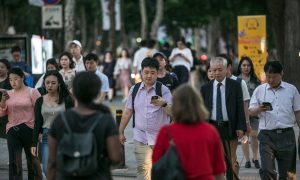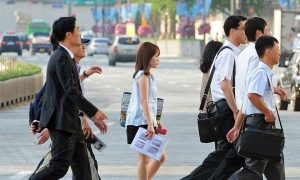South Korea, as an economic and technological powerhouse in East Asia, has been a globalimmigrantsof popular destinations. Whether it's for work, study, family reunion or seeking a better quality of life, more and more people are choosing toImmigration to Korea. However, while Korea offers a high quality of life and advanced infrastructure, its cost of living is also an important factor to consider before emigrating.
In this article, we will analyze the cost of living in Korea in detail to help you better understand the financial challenges you may face after immigrating and how to achieve financial balance in Korea.
I. Housing costs: unattainable prices in Seoul
For most immigrants, housing costs are usually one of the biggest expenses in life. Korea's major cities, especially Seoul, have high housing prices and relatively expensive rents. According to statistics, Seoul's housing market has experienced a significant increase in recent years, especially for properties and apartments in the city center, whose prices and rents may seem a bit overwhelming for foreign immigrants.
Rental situation
- Seoul Metropolitan Center, capital of South Korea (Chinese spelling adopted in 2005): Rent is relatively high in popular areas such as Gangnam, Jongno and Mapo in central Seoul. A one-bedroom apartment usually rents for between 500,000 and 1,000,000 won (about 3,000 to 6,000 RMB) per month. If you choose to share an apartment, on the other hand, it will be relatively inexpensive, with a monthly rent of around 200,000 to 400,000 won (1,200 to 2,400 RMB).
- Seoul suburb: Compared to the city center, rents are cheaper in the suburbs and satellite cities around Seoul, such as Gimpo and the parliamentary government. The monthly rent for a one-bedroom apartment is usually 300,000 to 600,000 won (1,800 to 3,600 yuan).
Cost of Buying a House
- For those who plan to settle down and purchase a home for the long term, the price of housing in Seoul is undoubtedly a huge challenge. Apartments in the city center can cost 50 million to 100 million won (300,000 to 600,000 yuan) or more.
Response to recommendations
- Choosing to rent in the suburbs: If you don't mind living a little farther away, you can choose a suburb of Seoul or a suburban city, which can greatly reduce housing costs.
- Consider sharing a room: Sharing a room with someone else not only allows you to share the rent, but also allows you to integrate into the local community more quickly.
II. Daily expenses: food and shopping
Food prices in Korea are relatively high, especially for imported goods and Western food, but local food and vegetables are relatively affordable. For immigrants, planning food expenses wisely is key to ensuring financial stability.
food prices
- Supermarket Shopping: The price of basic everyday food varies depending on the brand and where it is purchased, but in general, food prices in Korean supermarkets are high. For example, a bag of rice (10 kilograms) costs about 30,000 won (180 RMB) and a carton of eggs (10 eggs) costs about 4,000 won (24 RMB).
- dine out: Eating out in Korea is relatively inexpensive. A meal at an ordinary fast-food restaurant or diner will cost about 8,000 to 15,000 won (50 to 90 RMB). If you choose to go to a restaurant or enjoy some specialties, such as Korean barbecue and seafood, the cost is relatively high, and a full meal may cost 20,000 to 40,000 won (120 to 240 RMB).
Shopping & Entertainment
- Clothing and daily necessities: Clothing brands and fashion items in South Korea are overpriced, especially clothing from international brands. Local fast fashion brands such as Zara and Uniqlo can be relatively reasonably priced, but overall it is a bit more expensive to shop than many countries.
- Recreation and Leisure: Entertainment facilities in Korea such as movie theaters and gyms are moderately priced. A movie ticket is around 12,000 won (70 RMB), and monthly passes to gyms usually cost between 50,000 and 100,000 won (300 to 600 RMB).
Response to recommendations
- rational consumption: Try to choose to buy ingredients from local markets, avoid buying too much imported food and reduce unnecessary luxury spending.
- Attention to the budget: When eating out, choose a low-cost restaurant or utilize Korea's "take-out" service, which is available at many restaurants at relatively low prices.
III. Transportation costs: Seoul's public transportation system
Korea's public transportation system is very well developed and efficient, especially Seoul's subway and bus system, which covers almost the entire city and provides residents with convenient ways to get around. However, transportation costs also need to be included in the cost of living budget.
Metro and bus
- Subway and bus fares in Seoul are more reasonable, usually starting at 1,250 won (7.5 RMB) and increasing in cost depending on distance. Generally, a one-way fare from the city center to more distant areas will cost around 1,500 to 2,000 won (9 to 12 RMB).
- The Transportation Card (T-money card) is a must-have tool for traveling, and can be used to recharge and make purchases at subways, buses, and some convenience stores, making it very convenient to use.
(Taiwan) rental car
- Cabs start at 3,000 won (18 RMB), but longer distances may incur higher costs due to more complicated traffic conditions. If you have a regular route for work and life, public transportation will be a more economical option.
Response to recommendations
- Use of public transportation: Seoul has excellent public transportation, so try to rely on the subway and buses to get around and take cabs less often.
- Ticket Offer: The cost of transportation can be reduced to a certain extent by reloading with a transit card and taking advantage of monthly passes or discount cards, for example.
IV. Education and health care: high quality but high cost
Korea's education and healthcare systems are very advanced, but the corresponding costs cannot be ignored.

Education costs
- Children's education: If you're with childImmigration to Korea, the cost of education can be a major burden. Public schools in South Korea offer open access to foreign students, but private schools have higher tuition fees. Tuition at international schools usually ranges from 2 million to 5 million won (12,000 to 30,000 RMB) per year.
medical cost
- medical insurance: All persons residing in Korea are required to enroll in the National Health Insurance (NHI), which is usually deducted by the employer. If you are freelance or self-employed, you will need to make your own contributions. The health insurance covers most medical expenses, but there is still a certain amount of out-of-pocket expenses if you need to see a specialist or be hospitalized.
Response to recommendations
- Selection of public hospitals: Public hospitals in Korea are relatively inexpensive, so you can choose the nearest public medical institution to see a doctor.
- Choosing a public school for your child: Korea's public schools offer high quality education at relatively low costs, making them a suitable choice for immigrant families with long-term residents.
V. Summary:Korea ImmigrationIs the cost of living appropriate?
Immigration to KoreaThe relatively high cost of living, especially in the areas of housing, education and shopping, may put some financial pressure on foreigners who have just immigrated. However, Korea's high income level and good social benefits can compensate for the cost of living to some extent. For those who are able to plan their finances wisely and be careful with their money, Korea remains an ideal destination for immigrants.

Before deciding whether or not to immigrate to South Korea, make sure to plan your living budget in detail and learn about the consumption level and various costs of living in South Korea in advance to ensure that you can adapt to the local economic environment. Hopefully, through the analysis in this article, you can have a better understanding ofImmigration to KoreaYou will have a clear understanding of the cost of living afterward and be well prepared to start a new chapter of your life smoothly.






